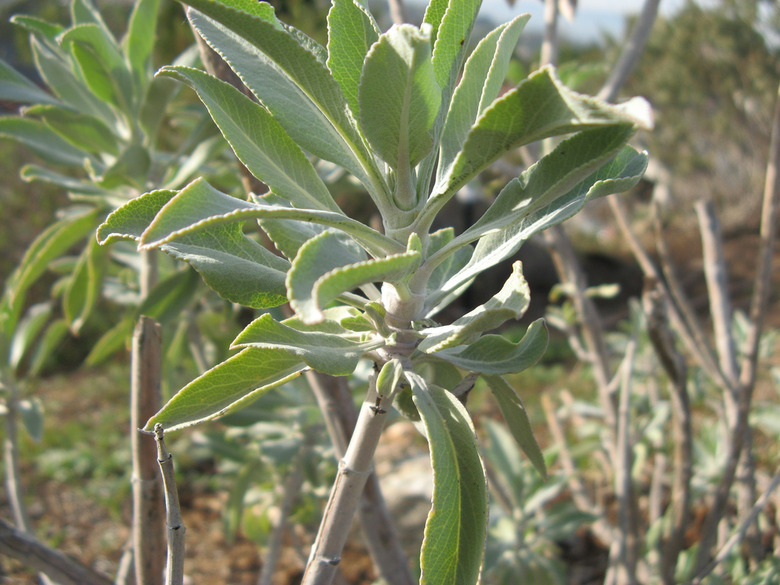How To Prune White Sage
Things Needed
- Shears or sharp knife
- Cotton swab
- Rubbing alcohol
- Stick broom or rake
Tip
Springtime is the best time to prune white sage. Prune as you harvest.
White sage, also known as Salvia apiana, is a member of the genus family Lamiaceae and native to California. Distinct white flower clusters appear around the stalk with leaves of powdery green. Use white sage for its medicinal purposes such as treating the common cold. White sage can fill the air with sweet scents and gives out a strong aroma when burned. Keep the white sage plant healthy to ensure that you can benefit from its many purposes. Pruning the leaves and branches of the white sage is beneficial to encourage new growth.
Step 1
Sterilize the sharp knife or shears using a cotton swab dipped into rubbing alcohol. This will eliminate the transfer of any plant diseases and/or infestations, especially if you use the same knife or shears on other plants.
- White sage, also known as Salvia apiana, is a member of the genus family Lamiaceae and native to California.
- Pruning the leaves and branches of the white sage is beneficial to encourage new growth.
Step 2
Cut the shoots before the flowers start to appear, usually in the early spring. Collect the cuttings 3 to 4 inches long, and remove the lowest pair of leaves. Harvesting and pruning are, essentially, one and the same because you can still use the cuttings.
Step 3
Remove the dead leaves and branches. Cut out the scraggly or wayward branches that you see.
Step 4
Shorten the branches by giving the plant a shape that is natural in appearance, which is more pleasing to the eyes. Avoid giving the plant an unnaturally even or straight cut.
- Cut the shoots before the flowers start to appear, usually in the early spring.
- Shorten the branches by giving the plant a shape that is natural in appearance, which is more pleasing to the eyes.
Step 5
Look at smaller or younger plants, and use them as your guide in measuring how much leaves and branches you should remove. Avoid cutting more than a third of the plant.
Step 6
Leave some of the branches to harvest later.
Step 7
Remove any debris from the cuttings that fell on the leaves and soil to prevent rotting. Use the stick broom or rake to remove droppings or cuttings from the soil.
